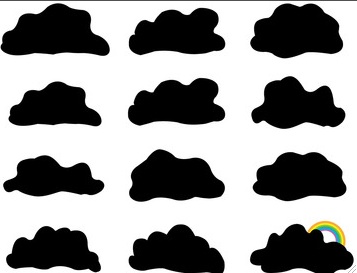 Entertainment Tonight recently reported that TV and music star Marie Osmond’s 18-year-old son, Michael Blosil, committed suicide last Friday in Los Angeles. In his suicide note, he described a life-long battle with depression, the reason for his suicide.
Entertainment Tonight recently reported that TV and music star Marie Osmond’s 18-year-old son, Michael Blosil, committed suicide last Friday in Los Angeles. In his suicide note, he described a life-long battle with depression, the reason for his suicide.
Osmond said Michael became depressed after she and her ex-husband, Brian Blosil, separated, and that he entered rehab in November 2007.
According to suicide.org, a teen takes his or her own life every 100 minutes. Suicide is the third-leading cause of death for young people ages 15 to 24. Approximately 20 percent of teens experience depression before they reach adulthood, and between 10 to 15 percent suffer from symptoms at any one time. Only 30 percent of depressed teens are being treated for it.
Some teens are more at risk for teen depression and suicide than others. Among them:
- Teen females develop depression twice as often than men.
- Abused and neglected teens are at risk.
- Adolescents who suffer from chronic illnesses or other physical conditions.
- Teens with a family history of depression or mental illness. Between 20 to 50 percent of teens suffering from depression have a family member with depression or some other mental disorder.
- Teens with untreated mental or substance-abuse problems. Approximately two-thirds of teens with major depression also battle another mood disorder like dysthymia, anxiety, antisocial behaviors, or substance abuse.
- Young people who experienced trauma or disruptions at home, including divorce and deaths of parents.
Some experts speculate that, after a decline in the 1990s, the number of teenage suicide began to climb again about five years ago. According to a piece in the “Kansas City Star” by Laura Bauer and Mara Rose Williams titled “‘A Very Dangerous Time’ Drives Up Teen Suicides After Years of Decline,” there is more hopelessness and helplessness among teens today. Tony Jurich, professor of family studies and human services at Kansas State University, says “Teens think they are invincible, so when they feel psychological pain, they are more apt to feel overwhelmed by hopelessness and the belief that they have no control over their lives.”
A new study released in January of this year, led by Jean Twenge, a San Diego State University psychology professor, finds that five times as many high school and college students are dealing with anxiety and other mental health issues as youth of the same age who were studied in the Great Depression era. Twenge, author of “Generation Me: Why Today’s Young Americans Are More Confident, Assertive, Entitled — and More Miserable Than Ever Before,” analyzed the responses of over 77,000 college students who took the Minnesota Multiphasic Personality Inventory from 1938 through 2007.
Some experts say that we have raised our children with unrealistic expectations, the same message perpetually fed to us by media: we should feel good always. Some say parents haven’t taught kids the real coping skills they need in today’s turbulent world … I suspect the guys who have never had a kid puke up strained carrots on them.
In my opinion, it’s all of the above and more.
Most experts would agree with me that there is more stress today than in previous generations. Stress triggers depression and mood disorders, so that those who are predisposed to it by their creative wiring or genes are pretty much guaranteed some symptoms of depression at the confusing and difficult time of adolescence. I think modern lifestyles–lack of community and family support, less exercise, no casual and unstructured technology-free play, less sunshine and more computer–factors into the equation. As well as our diet. Hey, I know how I feel after a lunch of processed food, and I don’t need to the help of a nutritionist to spot the effect in my eight-year-old son. Finally, let’s also throw in the toxins of our environment. Our fish are dying … a clue that our limbic systems (brain’s emotional center) are not so far behind. Maybe the same amount of people have genes that predispose them to depression as in the Great Depression. But maybe the lifestyle, toxins, and other challenges of today’s world tilts the stress scale in the favor of depression. My hypothesis for what it’s worth.
In the pages of Beyond Blue, I describe my own depression and alcohol abuse as a teenager. I could have very easily become one of the statistics–one of those deaths from teenage suicide that happens every 100 minutes. What saved me? The loving intervention of a few adults in my life at that time. They saw the red flags, such as these, warning signs of teen depression that scream “Wake up! We have a problem on our hands”:
- Sadness or hopelessness
- Low self-esteem
- Sluggishness (less active)
- Substance abuse
- Spending more time alone (this includes time alone from you as parents and time away from their regular friends)
- Decrease in desire to do things they used to like to do (sports, activities, hobbies)
- Physical ailments (headaches, appetite problems, sleeping problems)
- Problems in school (falling grades, getting into trouble, not paying attention in class)
- Talking about death or suicide (never to be taken lightly)
- Not caring about appearance
- Running away from home
Now let’s get to the hope. According to teendepression.org, 80 percent of teens with depression can be successfully treated if they seek the right help. I am part of that statistic. Teen depression doesn’t have to mean a lifetime of struggle, and it certainly doesn’t have to end in suicide.
* Click here to subscribe to Beyond Blue and click here to follow Therese on Twitter and click here to join Group Beyond Blue, a depression support group. Now stop clicking.

